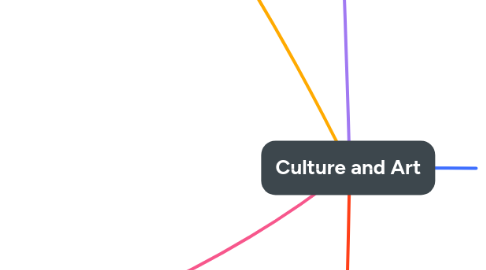
1. Classical art
1.1. Western European has claimed affiliation and reverence to Greek and Roman society. They believed Greece and Rome represented “Classical expression” of European art forms. Claim superiority over all other traditions of art and expression around the world.
1.2. 1929, British Museum and Parthenon MarblesGreatest body of original sculpture in existence. Monument of maturity of civilization Marbles originally part of Parthenon architecture. Moved to eye level changing the meaning.
1.3. Europeans in Mesopotamia : Biblical connection and hostility of style
1.4. Hellenomania: Fetishism of ancient Greek art.
1.5. Historians have clarified false connections to Greece based on false opposition to the Orient.
1.6. Te idea that Greece and Rome represented the “Classical” expression of European culture has infuenced Western concepts of art ever since. Burt, Ben. World Art : An Introduction to the Art in Artefacts, Taylor & Francis Group, 2013. ProQuest Ebook Central, http://ebookcentral.proquest.com/lib/fullerton/detail.action?docID=5327726 . Created from fullerton on 2022-10-01 02:47:00.
2. Oriental art
2.1. Edward Said (1978) Orientalism A way of coming to terms with the Orient that is based on the Orient's special place in European Western Experience. Expresses and represents that part culturally and even ideologically as a mode of discourse with supporting institutions, vocabulary, scholarship, imagery, doctrines, and even colonial bureaucracies and colonial styles.
2.2. Orientalism Asia and Middle East
2.3. British Opium in China
2.4. Chinese porcelain and ceramics trade
2.5. Indian scholars challenged Western perspectives:
2.6. Europe and Islam North Africa and Spain Islamic Golden Age had had scattered relics of Islam throughout Europe. Calligraphy Architectural masterpieces
2.7. Most of this Orient was actually in north Africa, but the dominant power was the Turkish Ottoman empire. Burt, Ben. World Art : An Introduction to the Art in Artefacts, Taylor & Francis Group, 2013. ProQuest Ebook Central, http://ebookcentral.proquest.com/lib/fullerton/detail.action?docID=5327726 . Created from fullerton on 2022-10-01 02:48:18.
3. Prehistoric art
3.1. Roots of the concepts of European origins: Based records on documents collected from Greeks and Romans.
3.2. Dawn of Art During last Ice Age people of last stone age 20,000 to 10,000 BCE Believed Native Americans were culturally analogous to their experience. Labeled them hunters and gatherers.
3.3. Issues with comparing ancient European cave art to indigenous societies Assume savage race theories.
3.4. Kenneth Clark comments on San Rock Art Relationship between animal and man closer
3.5. Archeology in Art Upper Paleolithic 35,000 – 10,000 years ago started to make art.
3.6. Matriarchal Origins: Fertility and reproduction honored and worshipped.
3.7. Women held original positions of power and evolved to male supremacy
3.8. North American Graves Protection and Repatriation Act (NAGPRA) Euro-Americans trace ancestry to Greeks Native Americans want to reclaim their ancestry from those who colonized
3.9. Cook’s research, reacting against these European male preconceptions, has shown that most of the female fgurines represented pregnant or middle-aged senior women past childbearing age, rather than erotic images. Burt, Ben. World Art : An Introduction to the Art in Artefacts, Taylor & Francis Group, 2013. ProQuest Ebook Central, http://ebookcentral.proquest.com/lib/fullerton/detail.action?docID=5327726 . Created from fullerton on 2022-10-01 02:49:57.
4. Primitive art
4.1. Savage and barbarous societies: Africa The Americas Pacific Islands Any regions far from Europe. Weak political organization. Chiefdom or tribe
4.2. European’s create “the other” and “primitive” society
4.3. invention of the “primitive man”Contrast of “civilized” societies. European ethnocentric. Colonial self-interest.
4.4. Unilineal cultural evolution-all cultures naturally evolve through the same sequence of stages from simple to complex.
4.5. Willful ignorance of historical evidence:
4.6. Historical particularism-the concept that cultures develop in specific ways because of their unique histories
4.7. Te native peoples of Africa, the Americas, the Pacifc Islands, and other regions far from the great civilizations of Europe and Asia might be called “savages” if they lacked the political organization to put up strong concerted opposition to their colonizers, or “barbarians” if they had only petty chiefdoms rather than kingdoms or empires. Burt, Ben. World Art : An Introduction to the Art in Artefacts, Taylor & Francis Group, 2013. ProQuest Ebook Central, http://ebookcentral.proquest.com/lib/fullerton/detail.action?docID=5327726 . Created from fullerton on 2022-10-01 02:49:08.
5. Origins of art
5.1. Archeology
5.1.1. The investigation of the human past by means of excavating and analyzing artifacts.
5.2. Anthropology
5.2.1. Greek words anthropos (human) and logos (thought, reason, or study)
5.2.2. Age of exploration/discovery and Colonial period set European countries to contact a variety of cultures.
5.2.3. Arm Chair anthropology used explorers books to build an understanding of different cultures. •Relied on materials instead of onsite research. •Worked with colonial agenda
5.3. Linguistic Anthropology
5.3.1. The study of human language in the past and the present
5.3.2. Descriptive linguistics- those who analyze languages and their component parts
5.3.3. Historic linguists-Those who study how language change over time within a culture and how languages travel across cultures
5.3.4. Sociolinguists-those who study language in its social and cultural context
5.4. art
5.4.1. Many Westerners believe art developed in Paleolithic caves. Art as we know it, originated in Europe, and the details affiliated with it:. Meaning. Ideas institutional analysis. Emotions
5.4.2. Elite and Royal defined art based on class and cultural value Dichotomy of value of artistic styles.
